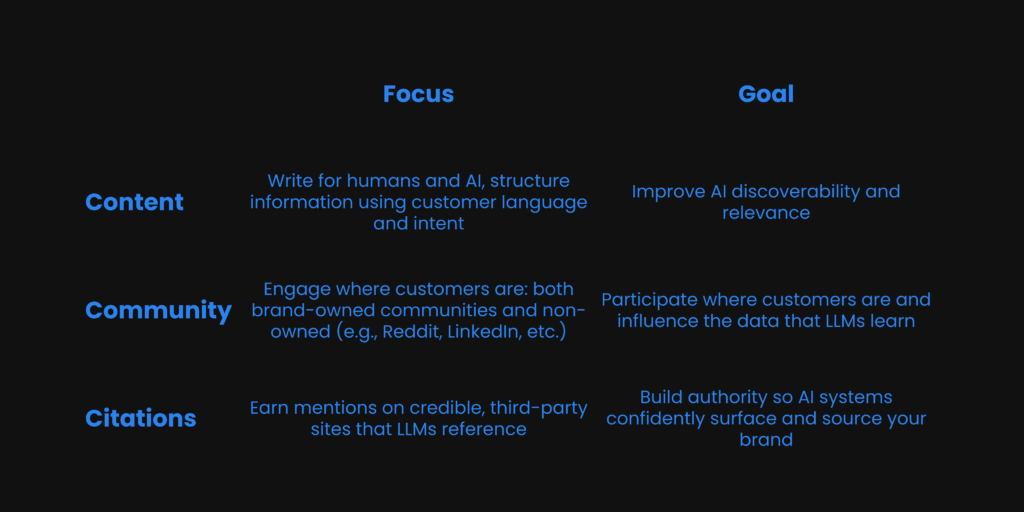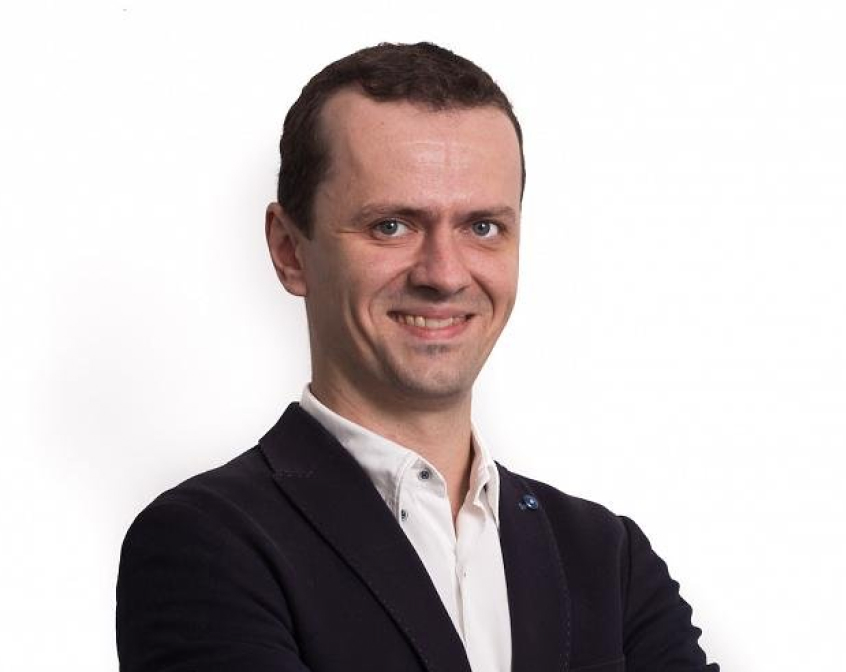Scott Wilder‘s two decades of building marketing systems at HubSpot, Google, Intuit, Adobe, and now LastPass have taught him that the discipline evolves in distinct phases. First came content creation, then automation to orchestrate that content across channels. Now, Scott argues, marketers face a fundamentally different challenge: Scaling intelligence, not just execution.
“We’re moving from thinking about automation to how do we scale intelligence,” Scott said. “Machine learning comes into play, and it’s a lot more than automation.” His work puts this into practice. At Udacity, Scott used machine learning to personalize not just message content, but timing and offers based on continuous behavioral analysis across every customer touchpoint. The approach delivered significant conversion improvements by enabling systems that learned and adapted, rather than simply executing predetermined rules.
Yet when searching for artificial intelligence (AI)-capable content creators, Scott struggles to find candidates who know how to use these tools effectively. The gap between AI’s marketing potential and most teams’ readiness to execute creates an opening for founders willing to rethink how marketing systems operate, from content strategy to organizational structure.
Content, Community and Citations
Scott’s framework for AI-era marketing centers on three interconnected dimensions that determine whether large language models (LLMs) will surface a company’s product when potential customers ask for solutions.

The first C is Content, and it requires a mental shift most marketers resist.
“We’re writing for humans and we’re writing for AI,” Scott said. “That drives my team crazy because no one wants to say we’re writing for a machine or writing for AI. But the reality is that’s what it is.
This doesn’t mean abandoning human readers; it means understanding how LLMs crawl and interpret content, then structuring information so machines can detect and surface it appropriately. LLMs like ChatGPT and Gemini ‘crawl’ and interpret online content to learn what companies or products solve specific customer problems. The challenge starts with customer language.
“Startups really need to understand the words that the customers use and then build out their content around those pain points so that the LLMs can crawl their sites, detect that information and make it available for customers,” Scott said.
The second C is Community, which encompasses user-generated content on both owned and third-party platforms. Scott points to Reddit as a critical example.
“Everybody’s writing about Reddit and everybody’s trying to figure out how to leverage Reddit more because that’s one of the main sources for LLMs,” he said. The insight extends beyond Reddit to any platform where customers gather and discuss problems. LLMs train on these conversations, meaning community engagement directly influences whether AI systems understand a market category and position solutions appropriately.
The third C is Citations — getting mentioned on sites that LLMs reference. This goes beyond traditional link building for search engine optimization. AI systems attribute information to sources they trust, and those citation patterns shape how confidently they recommend solutions. For early-stage companies, this means systematically building relationships and presence on platforms that feed into LLM training data. “AI still needs content,” Scott said. “Figure out, based on those pain points, what kind of content you’re going to create.”
The Three C’s work together: Content built around customer language gets discussed in communities, which generates citations, which trains AI systems to surface solutions when users ask about problems. Companies optimizing for only one dimension miss how these elements compound.
From Prediction to Personalization at Scale
The difference between traditional automation and machine learning isn’t incremental — it’s the ability to scale intelligence in ways that weren’t previously possible. For example, ed tech companies face a brutal reality: Less than 45 percent of students actually complete courses. At Udacity, Scott’s team used machine learning to understand the behavioral indicators of when someone would stop using the product. The approach differed fundamentally from traditional automation.
“It wasn’t like somebody did X and then you changed something,” Scott said. “It was really understanding all the different touch points in the product as well as what they were doing outside the product, like where they were responding to emails, where they were searching on our community site.”
The team then used machine learning to personalize three critical elements. First, the message content itself. Second, the timing of when to send that message. Third, the offer presented to that specific user.
The result: a system that continuously learned from behavior, adapting in real time instead of executing preset rules — what Scott calls scaling intelligence.
“We all know about calling a company and saying we’re going to cancel our subscription and they try and give you a unique offer,” Scott said. “Just being transparent, we would do that as well.”
The results validated the approach. Traditional automation could orchestrate predetermined messages on fixed schedules. Machine learning enabled continuous improvement and adaptation based on each user’s behavioral patterns, personalizing not just what was said, but when and how. These weren’t marginal improvements from better workflow automation. They represented what Scott calls scaling intelligence — systems that learn and adapt rather than simply execute predetermined rules.
Yet Scott observes a troubling gap. “I’ve been looking for one of our startups for an AI content person, like someone who uses ChatGPT and other tools for creating content,” Scott said. “It’s very hard to find someone who actually knows how to use these tools.” The capability exists. The talent to implement it at scale, however, remains scarce.
The Case for a Chief Content Ops Officer
Even at sophisticated companies like HubSpot, Adobe, Intuit, and Google, content creation often stays siloed — each team working from its own calendar and priorities.
Scott’s solution is what he calls a “COP on the beat”: a Chief Content Operations Officer who enforces cross-functional alignment and ensures content serves both human audiences and AI systems.
Why now? As AI becomes a major discovery channel, companies need a content leader who combines editorial judgment with technical fluency — someone who understands how search engines and AI models interpret, rank, and reuse content.
Scott models this mindset himself. “I actually have Claude or ChatGPT write my prompts for me and even when using those different LLMs, I play around with different personas — the marketing writer persona, the legal and privacy persona, the customer persona – each providing input into the content creation process,” he said. “I basically say this is what I’m trying to solve. This is the customer pain point. Please write a prompt for me.”
The skill isn’t writing clever prompts — it’s understanding what AI systems need to discover, learn, and surface your content effectively.
“I actually have Claude or ChatGPT write my prompts for me,” he said. “I basically say this is what I’m trying to solve. This is the customer pain point. Please write a prompt for me.”
The skill isn’t mastering prompt syntax — it’s understanding what AI systems need to discover and surface content effectively. That understanding remains rare. “I tell every person who’s under 40, unless you’re really investing personally in AI from a content perspective, you could be out of a job,” Scott said. “And it’s more than prompt engineering. It’s really being able to understand how AI is crawling your content and using your content.”
The responsibility falls on individuals because most companies won’t provide it. Research from BCG shows that only 30 percent of companies are taking initiative on AI training. “If your company is not taking the initiative to offer courses, which a lot of them are not, you have to do it yourself,” Scott said. Companies that do invest need to create safe environments for experimentation, but most optimize for short-term results rather than building long-term capability.
The Content Operations Officer role exists to navigate these tensions while ensuring the organization builds systems that remain relevant as AI discovery patterns evolve.
From Hierarchies to Growth Squads
Product-led growth and marketing-led growth created a new organizational unit that Scott believes will become the dominant model: Growth squads.
“I think there’s going to be more cross-functional teams,” Scott said. “Companies are going to have to move away from the traditional kind of hierarchical organization structure and move more towards shared metrics and shared goals.”
The approach requires identifying a specific challenge, then assembling the right people from across functions to solve it. At LastPass, Scott built a cross-functional team focused specifically on improving AI discoverability. The team shares metrics and goals, rather than optimizing for individual departmental KPIs. “Figure out the task you want to solve and then build the cross-functional team around that,” Scott said.
The model extends beyond marketing initiatives. When LastPass implemented a new platform for the customer experience and success teams, Scott’s team treated it like a growth squad. “We’re working and trying to be agile, working with certain short-term, mid-term, longer-term milestones,” he said. “We’re doing experimentation.”
This structure enables rapid learning and adaptation. Rather than following predetermined roadmaps, growth squads test hypotheses, measure results and adjust based on data. The emphasis on experimentation means failures become learning opportunities rather than setbacks.
The companies that win won’t be those with the most sophisticated individual functions, but those that can orchestrate expertise across boundaries to solve problems faster than competitors.
Marketing Fundamentals That Never Change
Despite AI transformation reshaping discovery and engagement, certain fundamentals remain constant. Scott identifies three that matter most.
First, know the customer deeply. “So many companies create the customer journey once and usually do it around budget time or at the end of the year,” Scott said. The exercise becomes performative rather than operational. Instead, companies need to constantly analyze the customer journey, understanding pain points at different milestones and how customers actually use the product in their environment.
Second, balance head and heart. “A lot of marketers are great with the heart in terms of sentiment and the brand positioning,” Scott said. “But you also need the head, which is the data.” Success requires both understanding what you’re solving for and how to measure it, combined with the storytelling that makes solutions resonate.
Third, map your ecosystem systematically. Scott recommends getting out a whiteboard and mapping partners, customers, suppliers, affiliates and influencers. Include decision makers, end users and admins. Figure out how each group researches and learns about your product. “Just constantly go back to the whiteboard and see if things have changed,” Scott said. Don’t erase — revisit and update as you learn.
Scott’s Sony consulting project illustrates the stakes of ignoring these fundamentals. Sony developed an internet device for bedroom nightstands where users could surf the web and check the time. Scott read roughly 1,000 Amazon reviews and discovered an unexpected pattern: Users were buying the device not for bedrooms, but for kitchens, using it to hold recipes while cooking. He recommended a complete repositioning. Sony declined, constrained by company history and identity around living room and bedroom products.
“You need to get in the kitchen to learn how to cook, to learn how to prepare the right AI stew,” Scott said.
The companies that win in AI-era marketing won’t be those with the most advanced tools. They’ll be the ones that continuously learn — scaling intelligence by connecting content, community, and citations in ways that mirror how customers actually think and search.
As Scott puts it, success now depends on building systems that learn as fast as your audience does.
Related Articles

Mihai Faur, CIO of UiPath, on Building Strategic Finance Teams
Crew Capital recently hosted Mihai Faur for a roundtable discussion with our portfolio companies. He shared insights on scaling finance…

Legal Mind, Security Leader: How Bradley Schaufenbuel’s Dual Expertise is Transforming the $150B Cybersecurity Industry
In our recent conversation, Bradley Schaufenbuel shared his insights on building effective security teams, driving innovation in application security, and…









